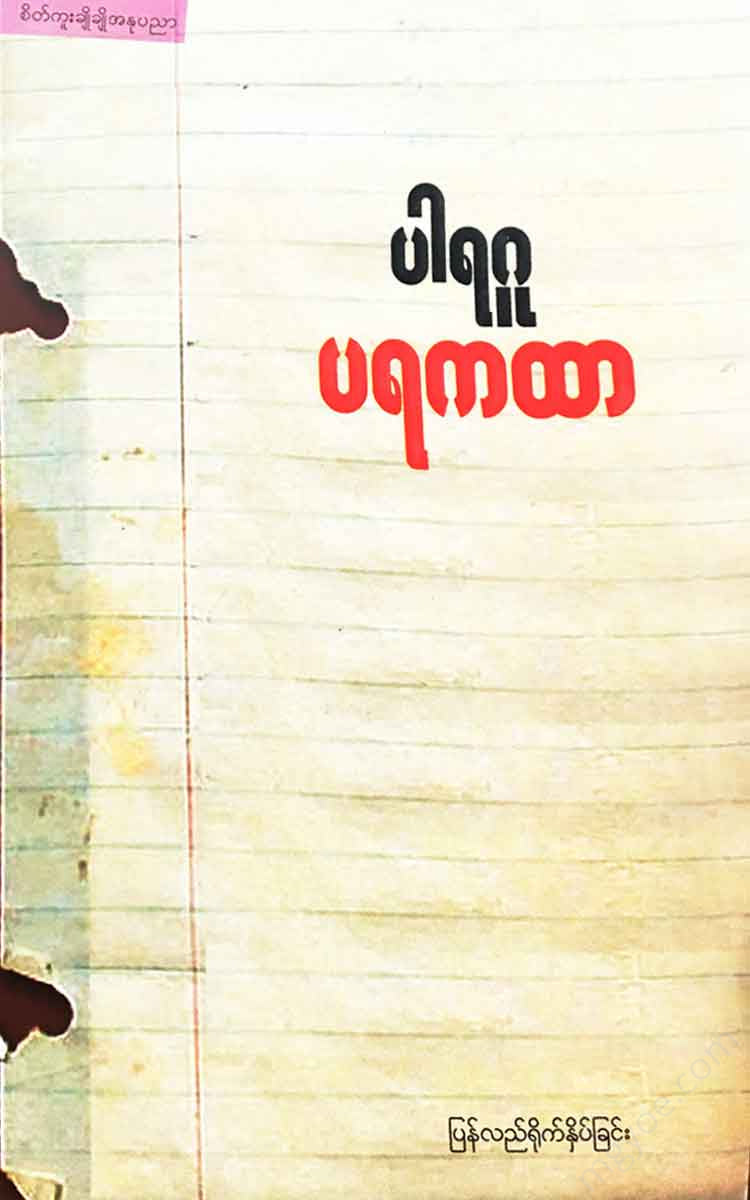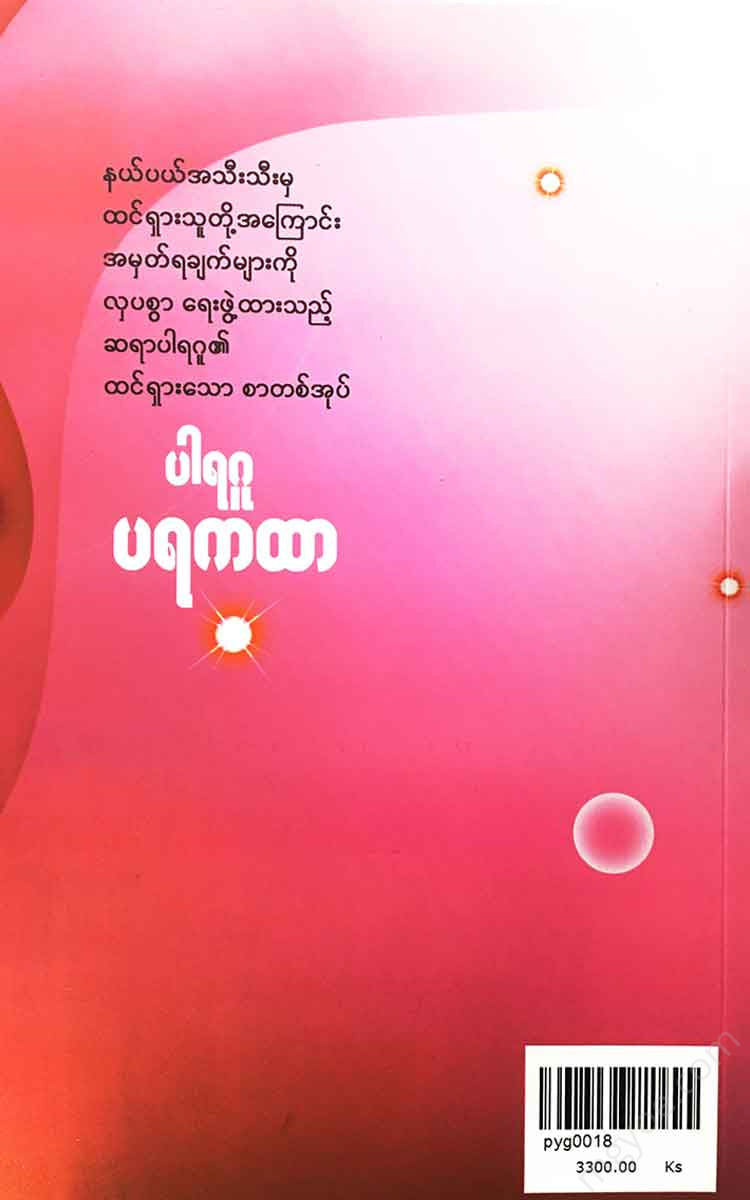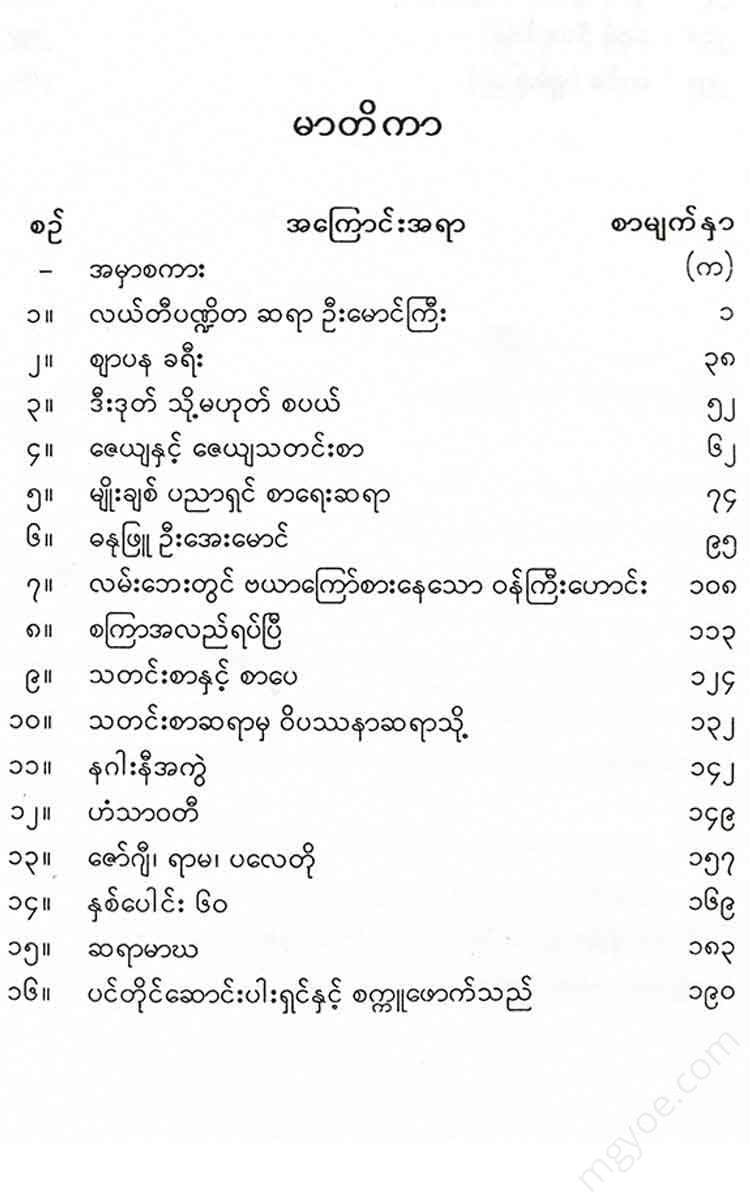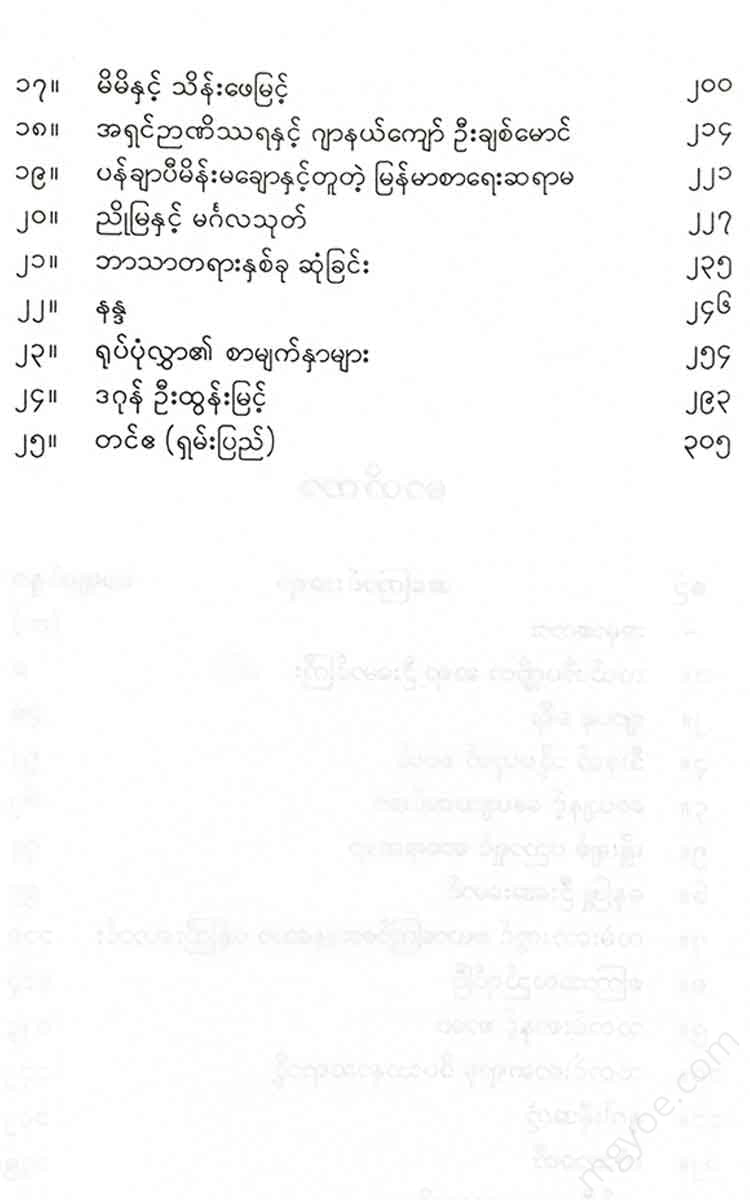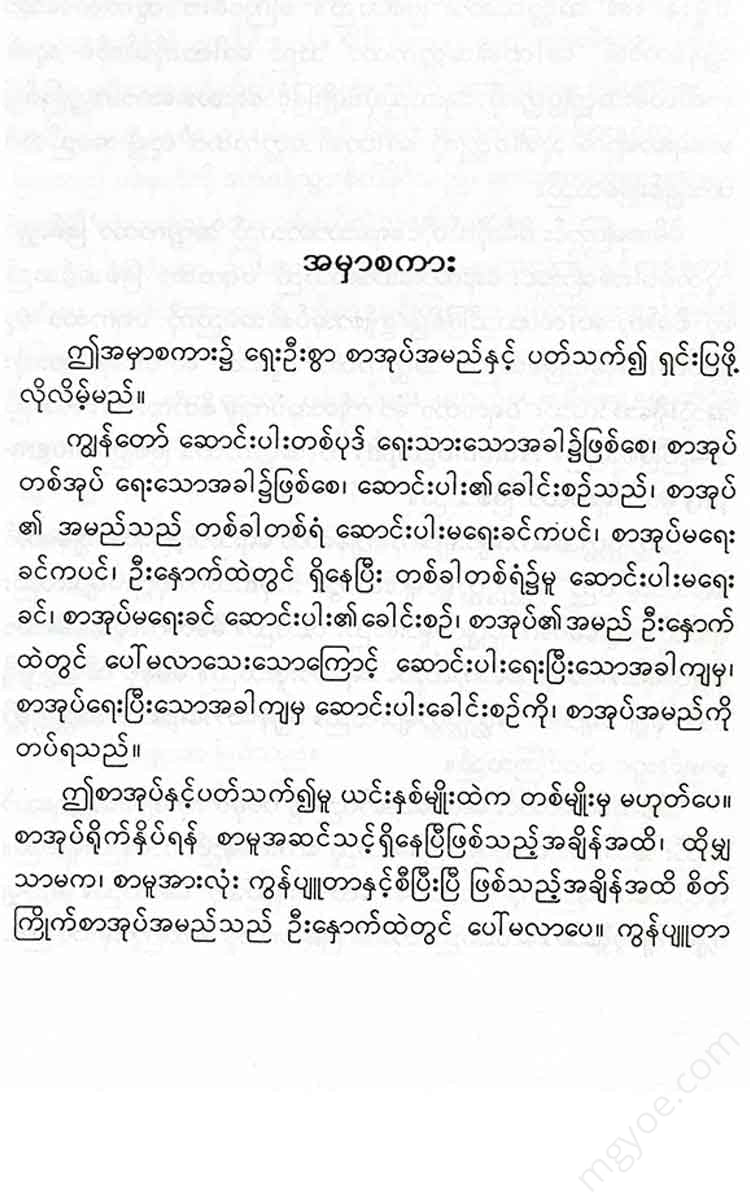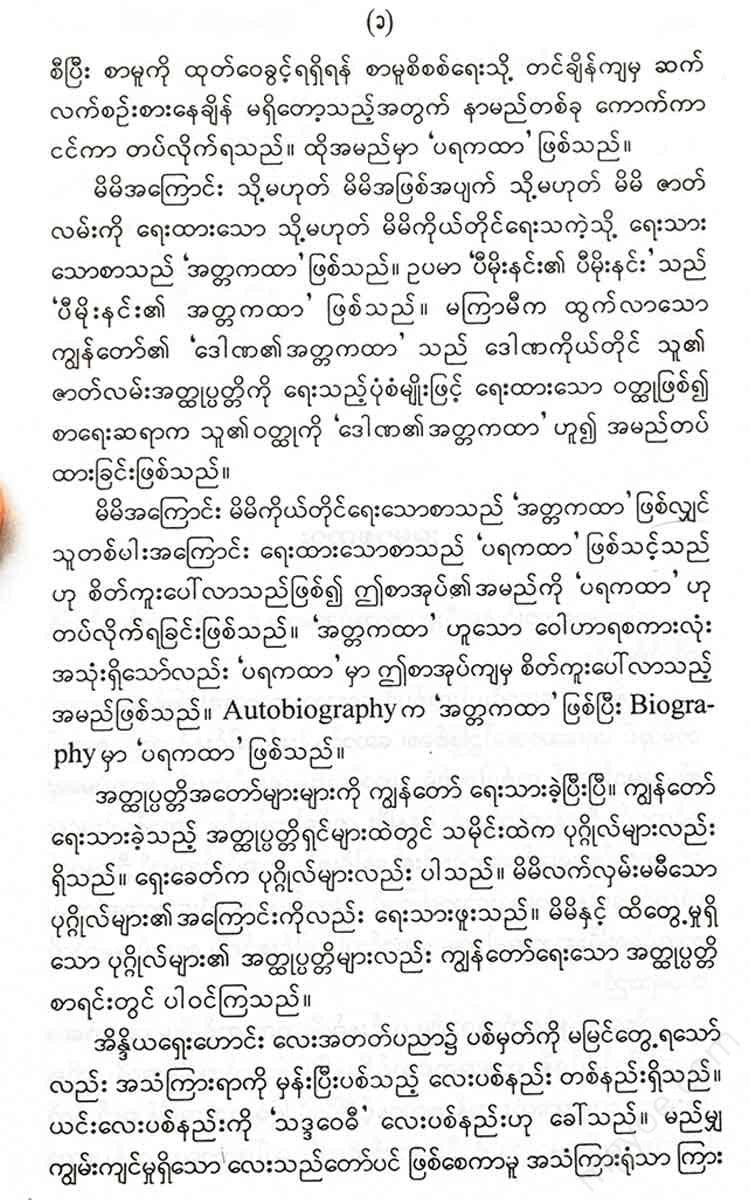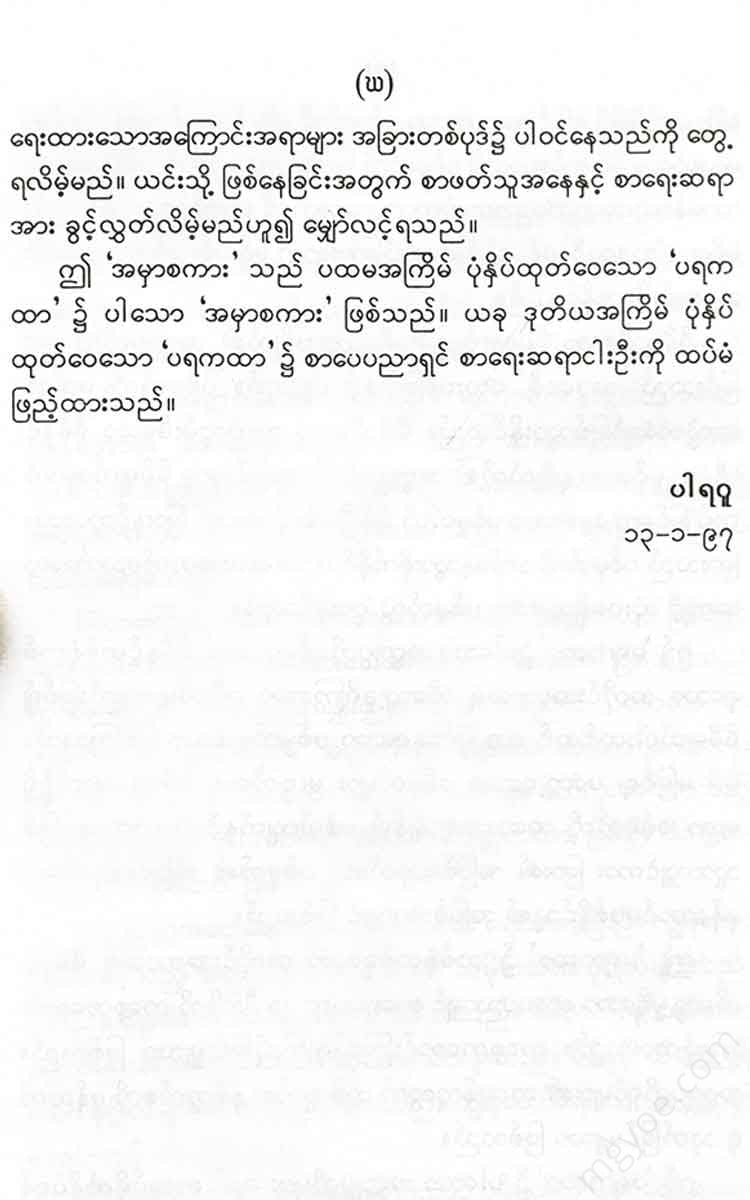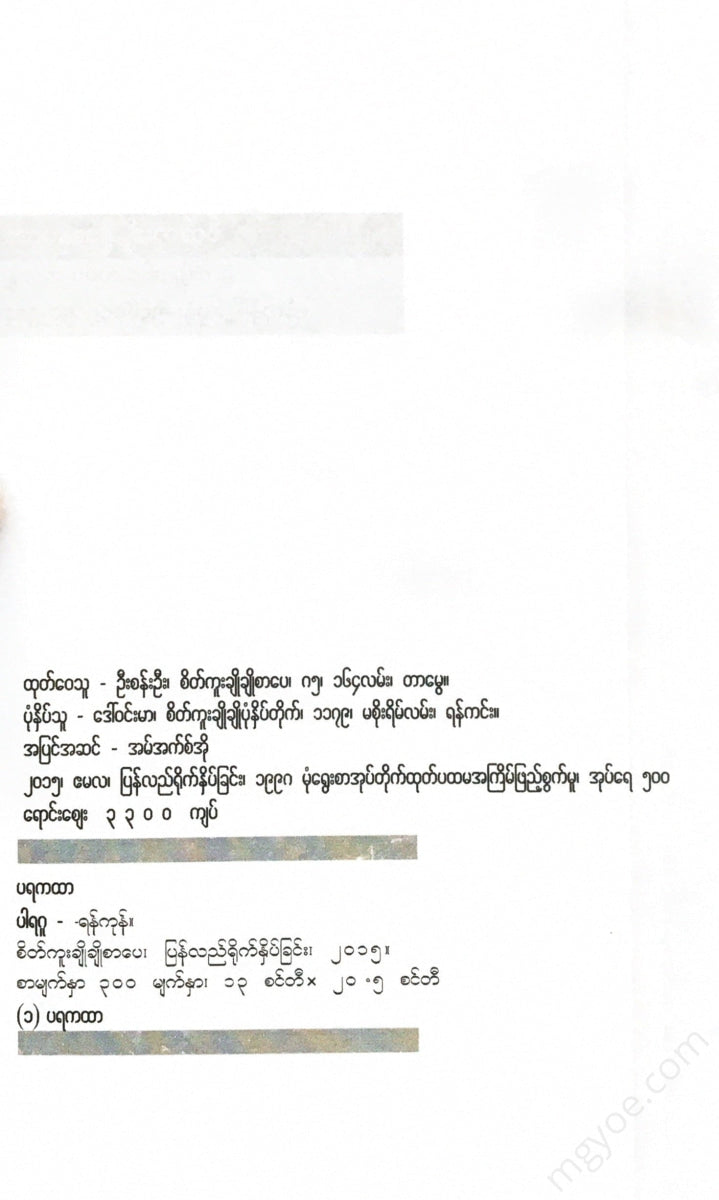စိတ်ကူးချိုချိုစာပေ
Expert - Prakatha
Expert - Prakatha
Couldn't load pickup availability
Leti Pandita Saya U Maung Gyi
“A black emerald, a green hand, a beautiful jade mountain The poet who composed the Yatu Sari-Gon died in April 1939, a year after composing the Yatu Sari-Gon.
As the poet had instructed before his death, his body was cremated on the banks of the Sallawatty River. A year before his death, the poet had written a poem on the occasion of the Buddha's birthday and bowed his head to the Jade Mountain Pagoda on the other side of the Sallawatty River.
Now it has struck again for the second time. The smoke from the cremation pyre rises into the sky and crosses the Sallawatty River towards the Jade Mountain Pagoda on the other side of the river. The poet is the poet U Maung Gyi, a monk of the Le Ti Pandita.
Leti Pandita Saya U Maung Gyi passed away in April 1939, having lived only 61 years. However, Leti Pandita Saya U Maung Gyi, during his short life span, wrote more letters, poems, novels, and books than ten or twenty writers, poets, and scribes combined could have written. It is rare to find a writer in the Burmese literary world who could write such a large number of lasting and solid works, not just cheap ones, in such a short life.
“I, Leti Pandita, was born at dawn on Thursday, the 9th day of the first lunar month of the year 1240. Today, the 9th day of the first lunar month of the year 1288 is Thursday. This book of questions and answers also ends with the month, day, and date of birth.”
The date of birth of Leti Pandita is known based on what the scribe himself wrote in the conclusion of the Pathānāma-Aṃṭhāna.
Leti Pandita was born in Nyaung Phyu Pin village, seven miles south of Monywa town. His parents were U Rau and Daw Tat. When he was young, Leti Pandita was called Maung Thant. At the age of 7, Maung Thant began studying as a monk at the Mayan Pin Monastery in Nyaung Phyu Pin village.
He learned the Tenpongyi, Mangalasuttha, Preikgyi, and Lokaniti within a year, and also mastered the Lokaniticho and Dhammanitho. He was ordained as a monk at the age of nine. The title of monk is Shinpandisa.
Soon after his birth, his mother Daw Tat passed away, and he returned to live with his old father. When he was 13 years old, his father passed away again, leaving Maung Thant, a young boy without siblings, living a lonely life in the middle of the world.
As is common with orphans, he did not live a settled life, but was a vagabond, a vagabond, and a vagabond. When he was 18 years old, he took the monastic vows for the eighth time and went to the monastery of Leti Sayadaw in Monywa in March 1899.
Since he came to the Leti Sayadaw, Shin Pandisa's academic career began to blossom. One of Leti Sayadaw's teachers, Salin Sayadaw, was named U Pandisa. When the Sayadaws gave their monks titles, they did not usually give them the titles of other teachers they respected. If they called their students by their teacher's name, they would be displeased because they were calling their students by their teacher's name.
When Shin Pandisa came to Leti Sayadaw, Leti Sayadaw would call his disciple Shin Pandisa “Pandisa.” If he called him like this, since his teacher Salin Sayadaw’s title was U Pandisa, he would not have a pure heart, even though he would have respected and honored the teacher. Therefore, Leti Sayadaw changed Shin Pandisa’s title to Shin Pandita.
When Shin Pandita taught the basic scriptures of the Pitaka to the Venerable Leti, he was so intelligent that the Venerable Buddha himself praised him for his extraordinary knowledge.
At the age of 20, he became a monk and soon became a lay person in the Letti region. U Pandita not only mastered the Pitaka scriptures but also became a renowned monk with a wealth of knowledge in the worldly and spiritual sciences, such as the history, the great works, and the deep works.
U Pandita, who was taught worldly and spiritual values from a young age, and who had the seed of poetry, developed a poetic instinct when he studied the poetry collections of Leti Sayadaw. He became a poet.
At that time, U Pandita became famous as “Grammar Pandita” for his mastery of Pali grammar, and “Poetry Pandita” for his excellence in poetry.
Among the Leti Sayadaws and their contemporaries, one of the most famous Sayadaws was Visuddhayona Sayadaw. Visuddhayona Sayadaw was not only well-versed in the Pali scriptures but also proficient in Sanskrit.
The Pali Pitakas of the Buddha contain many Indian influences, and Sanskrit influences are also present depending on the context. The Indian background and Sanskritism are helpful in understanding the Pali Pitakas.
Therefore, in ancient times, monks, especially some of the Shwe Kyin sect monks, studied Sanskrit. Abyarama Sayadaw of the Shwe Kyin sect was an exceptional scholar of the Pali Pitaka scriptures and opened a new chapter in the history of Myanmar Sanskrit literature.
The Visuddhayon Sayadaw was also a Sayadaw who studied Sanskrit along with Pali literature. Therefore, the Leti Sayadaw sent his disciple U Pandita to the contemporary Visuddhayon Sayadaw, who was well-versed in not only Pali scriptures but also Sanskrit scriptures. In doing so, the Leti Sayadaw had a broad perspective. The Sayadaw did not stick to one sect but allowed his disciple to learn from a Sayadaw of another sect.
U Pandita was called “Leti Pandita” because he was a monk at the Visuddhayama Monastery, and because the Visuddhayama Monastery’s venerable master had come to U Pandita from the Leti Monastery and was a disciple of the Leti Sayadaw.
It was called Kaung Letipandita. From that time on, it was called Letipandita.
Referring to that time
“Venerable Sunissaya,
Sakatesuti Kovidam,
True wisdom, Covid-19.
